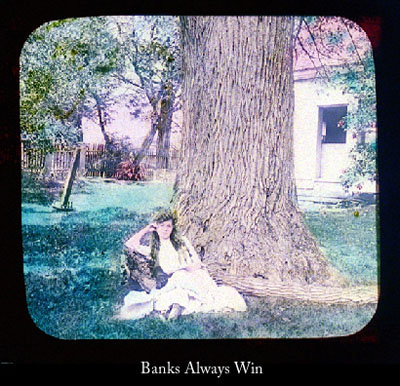
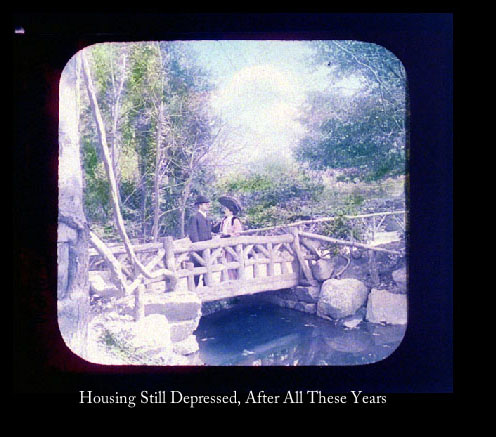
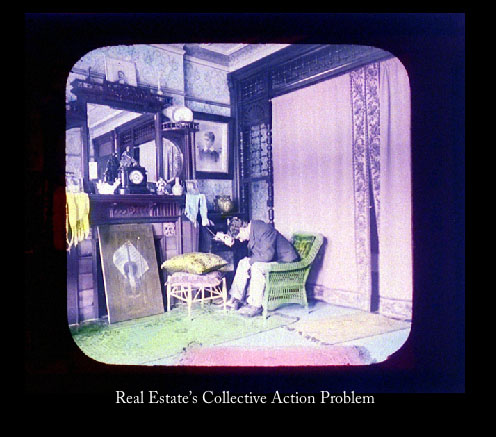
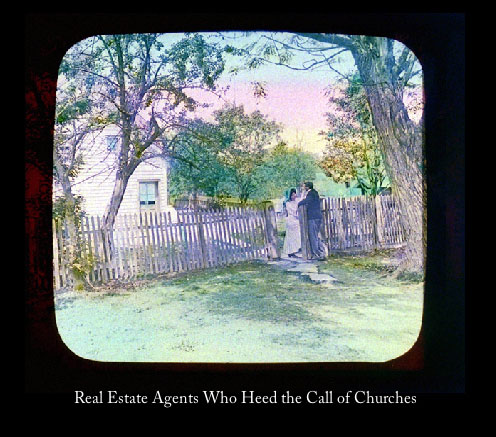
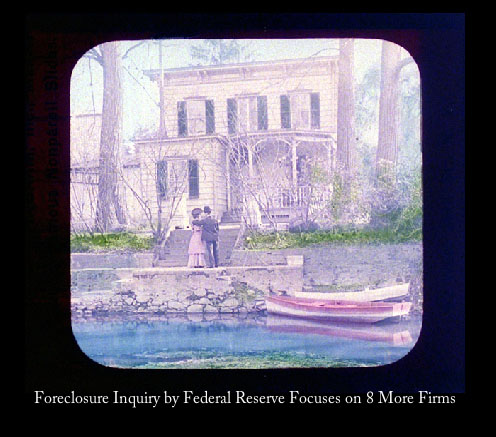

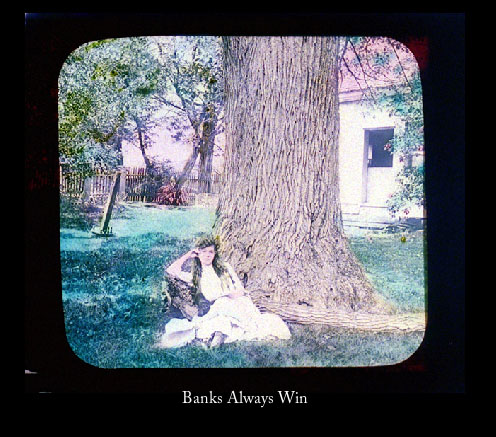
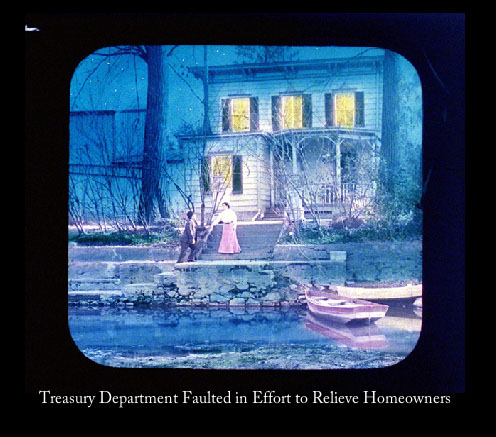
Foreclosures 2.0
In a pre-cinema, pre-television culture, a Magic Lanternist was he who would promulgate "current” events. The slides he carried were at times weeks, months, or years old. His show was adjusted upon on the availability of new images. Today, information is instantly and continuously accessible. Foreclosures 2.0 overlays up-to-the-minute New York Times Foreclosure headlines with Henry Ingram’s Magic lantern slides from the George Eastman collection. Ingram’s slides from the 1890s present an idealized model of late-19th century American (white upper class) domestic life in the decade in which U.S. home sales information was first recorded.
Foreclosures 2.0 "collides the pre-cinema culture of magic lantern slides with continuously and instantly accessible, up-to-the-minute New York Times headlines from the 'foreclosures' section. The luscious colouration of Henry Ingram's nineteenth-century slides evokes the Golden Age's idyllic upper-class model of American domestic life in the decade in which home sales were first officially recorded. Bradbury treats the dematerialised code as though it has the materiality of the original glass slides - both heavy and fragile simultaneously - while the evanescent digitised slides draw attention to the easily shattered dream of home ownership. This cunning play of material and immaterial immaculately prefigures the slippage of the two in the context of mortgage loans, contracts and repossession orders. One minute it's arguably the most material thing possible - bricks and mortar - but if the market shifts just a fraction, it can evaporate like steam. The home is forfeited, and the contract debit relationship is the only thing evidently present, solid, impossible to renegotiate."
Quote from Isabella Streffen "The money shot: burning, falling, vanishing" in the "Show Me the Money: The Image of Finance, 1700 to the Present" exhibition catalogue, Edited by Paul Crosthwaite, Peter Knight and Nicky Marsh. Manchester University Press. 2014.